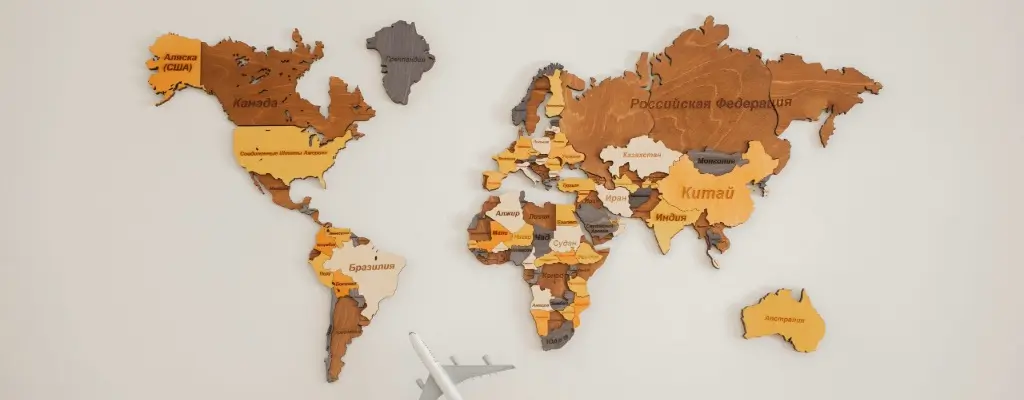Recently, the number of U.S. students studying abroad has surged dramatically, with approximately 170,000 students in 2022. Many view studying abroad as an opportunity to expand their horizons while others see it as a chance to challenge themselves. Starting an overseas academic adventure is exciting and transformational, but it can also be hectic and overwhelming, requiring extensive planning and preparation. Students often don’t know where to start or what to look for. Worry less, you’re in good hands. With these 8 ways to study abroad, your dream is no longer far away.
1. Through Your University

This is the most common way for students who want to go overseas. Most universities partner with other schools abroad and offer credit-transferable programs. You can select what works best for you-spring, summer, or fall semester.
Your home university provides almost all assisting services, from consulting to mentorship, except for visa applications. The only downside is that students have limited school options as they can only go to schools partnering with their home universities. Fortunately, you can transfer your current financial aid and rewards and apply for scholarships.
2. Directly with an Overseas University

Some students prefer to take matters into their own hands and apply for a study abroad program themselves. Many universities welcome international and exchange students, offering information and additional support on their websites. You can research and explore more by directly accessing the school website’s admissions section, where you can find all the information regarding the program, such as enrollment, housing and visa applications. With this option, you have a broader range of choices, though it can sometimes be overwhelming to do everything yourself. If you’re interested in learning more, The Global Admissions provides great sites for program research.
3. With a Third-Party Provider
If you don’t want to do everything by yourself or have your options limited, a third-party provider would be a better fit. Providers like International Studies Abroad (ISA) and CEA ensure students receive full support while having a joyful experience. Students don’t have to worry about anything, as they are provided a full package of services including visa application, school enrollment, accommodation, and 24/7 overseas support. Students can also apply for scholarships and funds to reduce expenses through these providers.
4. Through a Language School

Prefer to dive deep into only language classes while still studying abroad? A language school would suit you. Going overseas through a language school ensures full immersion into new cultures while helping you become proficient in a language. These programs offer flexible class schedules with a focus on languages and cultures. During these classes, you will have opportunities to communicate with natives and engage in applicable cultural lessons. However, this can be overwhelming for some students, as most of the programs are intensive and require five-day classes.
5. Through an Internship for Course Credits
If you want to gain real workforce experience while being overseas, this is for you. Many international companies offer students overseas internships in exchange for course credits. They also provide support in visa applications and housing if needed. This is a good chance for students to experience a multicultural working environment or even their dream company in advance. However, most of these internships are unpaid.
6. With a Field Research Abroad Program

This is another immersive study abroad program for students who want to gain hands-on experience. Field studies are integrated experiences outside the classroom in which students collect data and conduct research in real-world settings. Students can experience this in various locations, from the Amazon forest to archaeological sites, and even the UN in Geneva.
This is a great opportunity for adventurous students who want real-world experience while earning school credits. The downside is that some field research programs’ timelines don’t align with the school semester, and some may even require a full-year commitment.
7. Through a High School Study Abroad Program

Studying internationally isn’t just for college students. It’s also available during your high school years. There are government-funded programs that offer high school students study abroad opportunities along with scholarships and rewards. High school students can experience a new overseas culture and environment, preparing themselves for college life. Some programs even offer college credit in advance.
8. Through a Government Program
To encourage cultural exchange and promote diplomacy, The U.S. Department of State offers a variety of exchange programs with financial support, including the Benjamin Gilman Scholarship. While these programs are well-planned and make your resume stand out, getting a spot is competitive. Students have to fulfill many requirements to be granted a slot.
Planning for Your Study Abroad Journey
Before planning to study overseas, there are some aspects you should consider:
Determine Where You Want to Go: Think about which country you want to visit and why. It could be because you love the culture, are curious to explore, or want to be closer to them. No matter the reason, consider what you want.
Decide How You Want to Go: Decide how you want to study abroad. It can be through your home university’s program or by applying directly to an international school. Think about your current situation and available resources to decide the best way.
Determine the Time Length of the Program: Some programs vary from two weeks to two years. You need to think about which one works best for you.
During planning, it is important to set a to-do list to help keep track of what needs to be done:
- Meet up with the program’s mentor/advisor
- Prepare visa application, passport and required documents
- Book airfare tickets at least 2 months in advance
- Research about the country’s customs and cultures
- Download useful apps
- Sign up for a wellness check-up
- Financing and budgeting
Commonly Asked Questions
What is studying abroad?
Studying abroad is gaining educational-related experience in a foreign country. During study abroad, students stay overseas to study at a foreign university.
How long does a study abroad program usually last?
The length of a study abroad program depends on what the school offers for a certain major and the students’ personal needs. A typical program usually lasts from 1 to 2 semesters. Some programs last up to 12 months.
How much does studying abroad cost?
According to research from the International Institute of Education, students who study abroad spend an average of $18,000 per semester and $36,000 for the full academic year. The cost includes tuition fees, accommodations, living expenses, and transportation. Therefore, students can apply for scholarships, financial aid, and student loans to support their trip.
Where should I start if I want to study abroad?
You can start by setting a goal. Think about what you want to achieve after your trip and why you want to do it. If you need more information, check out these tips for studying abroad!
Planning to study abroad and don’t know what to do with your stuff? Collegeboxes is here to help! With our Study Abroad Storage and Shipping Services, we ensure your belongings are picked up, stored and shipped to any destination. Learn more about our Study Abroad Storage and Shipping Services and sign up today!
